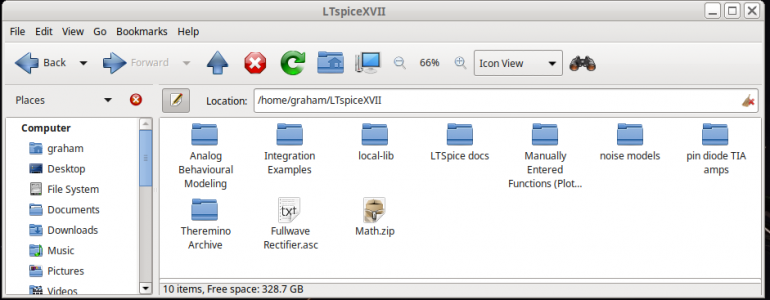Thanks Mark.
It adds to my list of low noise FETs. There are essentially two circuit strategies. One is to use a low noise high GBW op-amp direct in the most simple design style, but split into stages to have the first TIA gain about 200,000 to 220,000. This for noise about 3nV/√Hz to about 6nV/√Hz
The other way is is use the low-noise FET enhanced front-ends along with a low noise op-amp. An example is the 2.4GHz GBW circuit using IFN147.
The difference is that straight TIA op-amps off noise in range 2 -10 nV/√Hz. The FET front-end types offer 0.8nV/√Hz to about 1.5nV/√Hz.
The IFN147 from Mouser is is the TO-18-3 sealed can, and is a whole £15-93. We can have a whole nice dual TIA op-amp for that much!
Interesting that when looking for the 2SK147, the Mouser search finds SMP147, definitely called a P-channel JFET, but the datasheet brings up InterFET's IFN147 again, shown a N-channel FET. Maybe it was a web page mistake!
2SK2145's are duals with lower capacitance, and similar noise figure, are only £0.51, but they have lower transconductance.
IF1330's you suggest would do just fine. Strange that the Mouser search brings up a IF1320 datasheet. I wonder if keeping the part in sync with the datasheet just a problem at Mouser?
For my first shot, I am trying to keep things simple, and as few components as possible. I was aware of LTC6268/6269. Same data sheet, different price, because the LTC6269 is a dual op-amp costing £10.44. Given the first stage has more than 56dB power gain, the noise figure ceases to be a problem, and 4.3nV/√Hz is, I think, low enough to be below the other noises anyway. One does then need at least another op-amp, and it can be lower cost type. If more are needed to implement noise filtering, ADC driving, reference buffering, whatever, it could be a quad.
Alternatively, using one of the quad to be the bias loop control with the discrete FET circuit would be another good solution.
It adds to my list of low noise FETs. There are essentially two circuit strategies. One is to use a low noise high GBW op-amp direct in the most simple design style, but split into stages to have the first TIA gain about 200,000 to 220,000. This for noise about 3nV/√Hz to about 6nV/√Hz
The other way is is use the low-noise FET enhanced front-ends along with a low noise op-amp. An example is the 2.4GHz GBW circuit using IFN147.
The difference is that straight TIA op-amps off noise in range 2 -10 nV/√Hz. The FET front-end types offer 0.8nV/√Hz to about 1.5nV/√Hz.
The IFN147 from Mouser is is the TO-18-3 sealed can, and is a whole £15-93. We can have a whole nice dual TIA op-amp for that much!
Interesting that when looking for the 2SK147, the Mouser search finds SMP147, definitely called a P-channel JFET, but the datasheet brings up InterFET's IFN147 again, shown a N-channel FET. Maybe it was a web page mistake!
2SK2145's are duals with lower capacitance, and similar noise figure, are only £0.51, but they have lower transconductance.
IF1330's you suggest would do just fine. Strange that the Mouser search brings up a IF1320 datasheet. I wonder if keeping the part in sync with the datasheet just a problem at Mouser?
For my first shot, I am trying to keep things simple, and as few components as possible. I was aware of LTC6268/6269. Same data sheet, different price, because the LTC6269 is a dual op-amp costing £10.44. Given the first stage has more than 56dB power gain, the noise figure ceases to be a problem, and 4.3nV/√Hz is, I think, low enough to be below the other noises anyway. One does then need at least another op-amp, and it can be lower cost type. If more are needed to implement noise filtering, ADC driving, reference buffering, whatever, it could be a quad.
Alternatively, using one of the quad to be the bias loop control with the discrete FET circuit would be another good solution.






